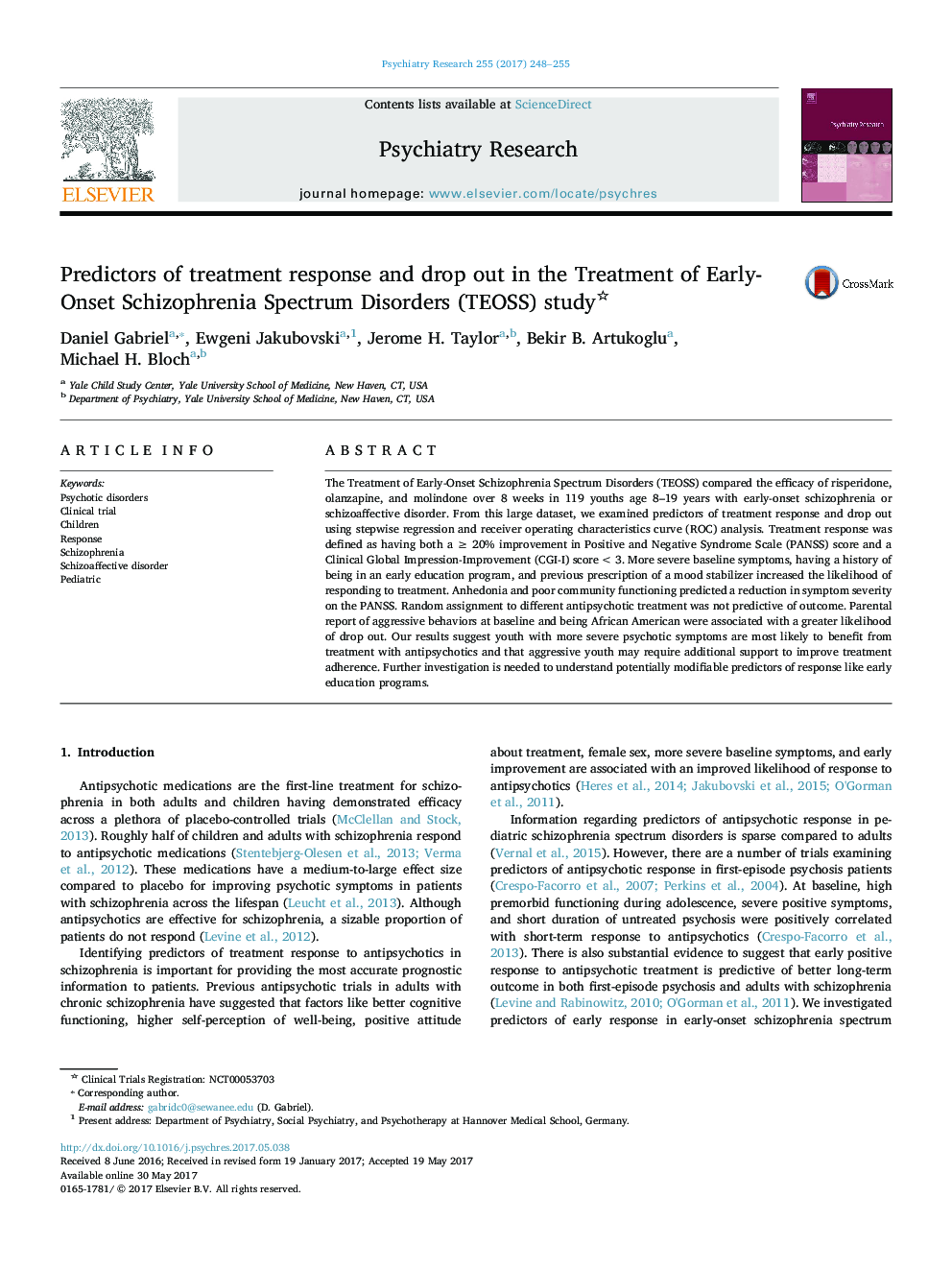| Article ID | Journal | Published Year | Pages | File Type |
|---|---|---|---|---|
| 4933201 | Psychiatry Research | 2017 | 8 Pages |
Abstract
The Treatment of Early-Onset Schizophrenia Spectrum Disorders (TEOSS) compared the efficacy of risperidone, olanzapine, and molindone over 8 weeks in 119 youths age 8-19 years with early-onset schizophrenia or schizoaffective disorder. From this large dataset, we examined predictors of treatment response and drop out using stepwise regression and receiver operating characteristics curve (ROC) analysis. Treatment response was defined as having both a ⥠20% improvement in Positive and Negative Syndrome Scale (PANSS) score and a Clinical Global Impression-Improvement (CGI-I) score < 3. More severe baseline symptoms, having a history of being in an early education program, and previous prescription of a mood stabilizer increased the likelihood of responding to treatment. Anhedonia and poor community functioning predicted a reduction in symptom severity on the PANSS. Random assignment to different antipsychotic treatment was not predictive of outcome. Parental report of aggressive behaviors at baseline and being African American were associated with a greater likelihood of drop out. Our results suggest youth with more severe psychotic symptoms are most likely to benefit from treatment with antipsychotics and that aggressive youth may require additional support to improve treatment adherence. Further investigation is needed to understand potentially modifiable predictors of response like early education programs.
Keywords
Related Topics
Life Sciences
Neuroscience
Biological Psychiatry
Authors
Daniel Gabriel, Ewgeni Jakubovski, Jerome H. Taylor, Bekir B. Artukoglu, Michael H. Bloch,
